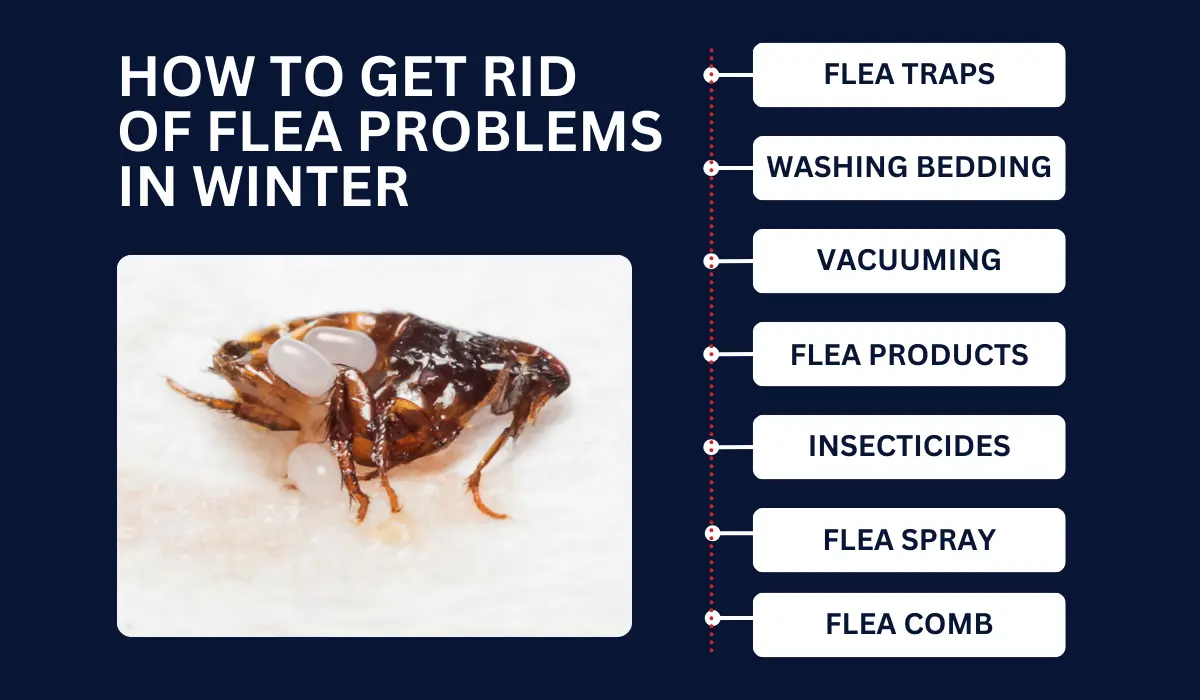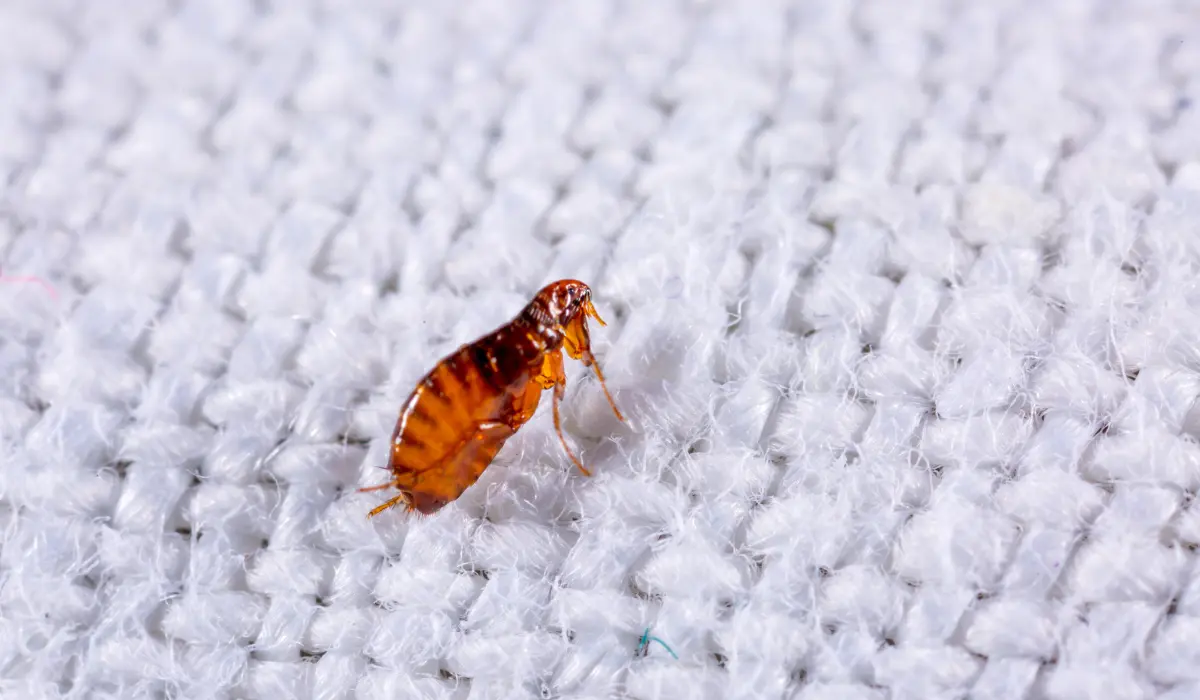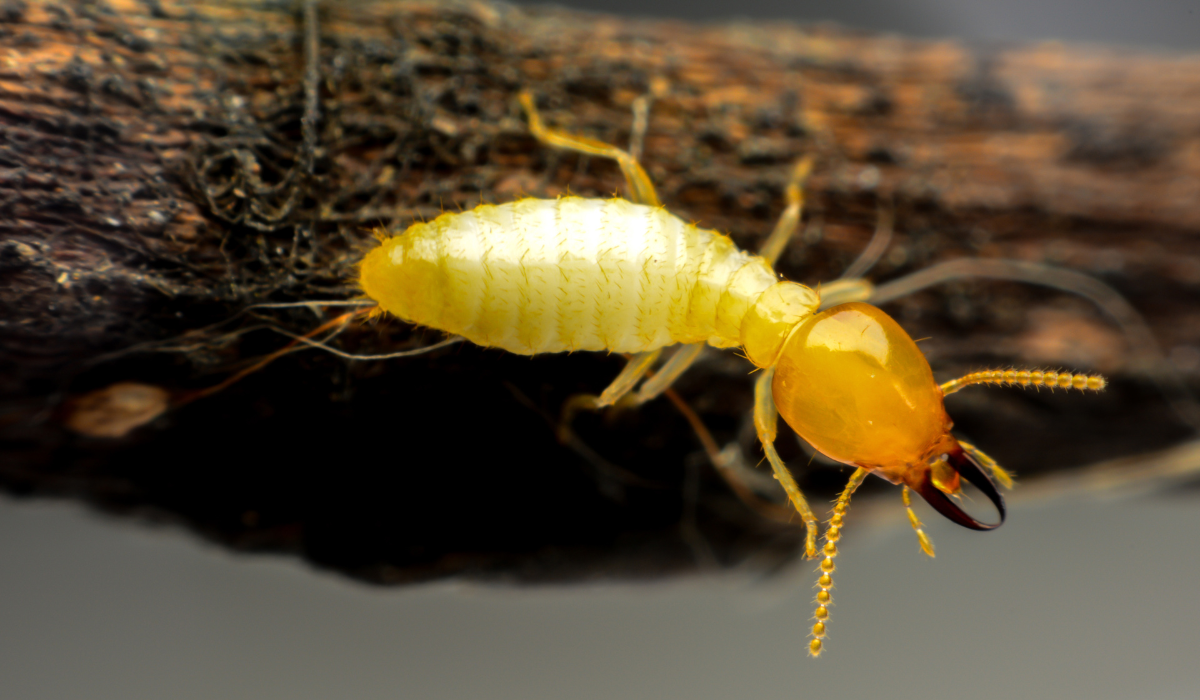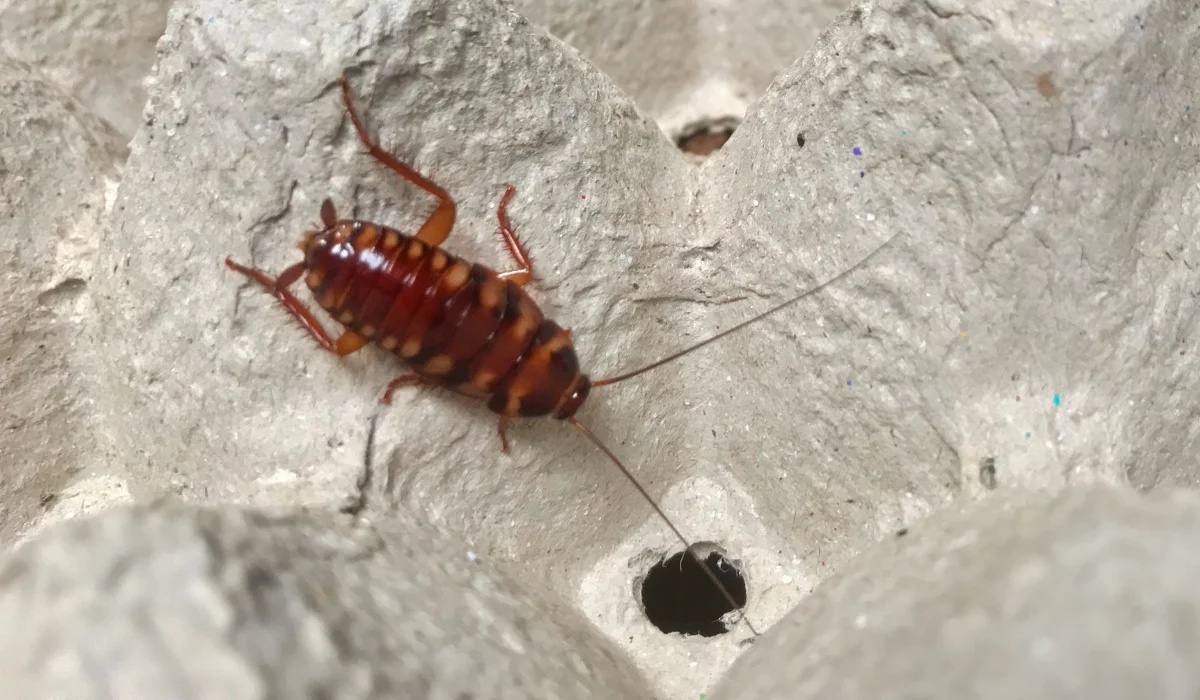Imagine you’re bundled up in your favorite winter woolies, enjoying a warm cup of cocoa, only to see your pet scratching furiously. Yes, fleas can still be a problem and spread tapeworms in winter.
How do these pesky critters survive the cold months, and what does it mean for pet owners? Keep reading to explore how professional flea removal in Slidell can protect your home and pets.
Key Takeaways
- Fleas can survive winter by seeking warmth and remaining active indoors, and their life stages show varying degrees of cold resistance.
- Sustained freezing temperatures below 37 degrees Fahrenheit can significantly affect flea populations, especially their reproductive cycles.
- Signs of flea infestations during colder months include itchy bites, flea dirt on pet bedding, and pets exhibiting excessive scratching and hair loss.
- Effective winter flea control involves applying flea treatments and contacting pest control professionals to prevent infestations.
DO FLEAS SURVIVE IN WINTER?
Fleas found in cats and dogs are resilient pests that can cause problems year-round. They’re also in common with outdoor wildlife, raccoons, rabbits, and squirrels.
While cold weather can slow down their development, certain temperatures can kill fleas, especially during prolonged exposure.
Adults and pupae, with their protective cocoons, can survive slightly colder conditions.
However, they may face significant risks at sustained temperatures below 32°F (0°C). Eggs and larvae are particularly sensitive to temperatures below 37.4°F (3°C).
Here’s a look at their adaptability and survivability in winter:
| Life Cycle | Survivability in Winter |
|---|---|
| Flea Eggs | Can withstand cold, though with a reduced hatching rate |
| Flea Larvae | Can develop but are vulnerable to cold |
| Flea Pupae | Highly resilient, can remain dormant in cocoons |
| Adult Fleas | Active, seek warmth between 70-85°F (21-29°C) |
HOW DOES COLD WEATHER AFFECT FLEA POPULATIONS?
Cold weather presents unique challenges for flea populations, influencing lifespan and survival rates. During winter, fleas adapt by seeking warmth and relying on their resilient life stages.
When temperatures drop, these pests actively seek out warm hosts to continue the flea life cycle indoors. Unlike bed bugs that feed on a human blood meal, these pests target your pets.
This behavior ensures they can continue reproducing.
SIGNS OF WINTER FLEA INFESTATIONS
Signs of flea infestations can persist through winter, especially indoors. They may hide in various places, causing bites and leaving traces behind.
During winter, these pests tend to stay indoors. To easily spot any fleas that might jump on you, wear white socks around the house.
To prevent bites from male and female fleas, other signs to look for include:
| Signs of Flea Activity | Description |
|---|---|
| Flea Bites | Small, red, itchy bumps mostly found on legs and ankles in humans. |
| Flea Dirt | Black specks (flea feces) visible on pet bedding or furniture. |
| Scratching Pets | Excessive scratching, biting, or grooming in pets. |
| Hair Loss | Bald patches on pets caused by frequent scratching. |
Where Do Fleas Hide Indoors During Winter?
Recognizing common hiding spots helps stop fleas from spreading diseases like anemia and heartworm. Fleas avoid cold temperatures by hiding in warm, moist environments inside homes.
They frequently nestle in pet bedding, carpeting, and other plush areas in dens or living spaces. Upholstered furniture also offers ideal hiding spots.
HOW TO GET RID OF FLEA PROBLEMS IN WINTER

Managing fleas in winter is critical because these pests can survive and thrive indoors, even when it’s cold outside.
Here’s how to tackle and get rid of those pesky winter fleas:
- Flea Traps: Use flea traps with soapy water placed under a light source.
- Washing Bedding: Wash your pet’s bedding regularly in hot water.
- Vacuuming: Regularly vacuum carpets and furniture to remove all life stages.
- Flea Products: Use store-bought flea treatments designed for winter use.
- Insecticides: Apply insecticides in areas where fleas are likely to hide.
- Flea Spray: Use a pet-friendly flea spray to target adult fleas and larvae.
- Flea Comb: Regularly comb your pet with a flea comb to remove fleas and eggs.
HOW TO PREVENT FLEA INFESTATIONS IN WINTER
As temperatures drop, it becomes crucial to put in place strategies to safeguard your home and pets from cat and dog fleas.
Here are effective ways to prevent re-infestation during the winter months:
- Use Flea Collars: Ensure pets wear flea collars. These provide continuous flea control and help keep them flea-free year-round.
- Apply Topical Treatments: Spot-on products like Frontline work well. Apply them according to the instructions for consistent protection.
- Maintain Cleanliness: Wash pet bedding regularly in hot water. This kills fleas and eggs hiding in fabrics.
- Check Pets Regularly: Inspect pets for fleas. Look for signs like scratching or small dark spots in their fur.
- Treat Your Yard: Keep your yard clean by removing debris and clutter. Persistent infestations call for professional flea removal which guarantees comprehensive care and long-lasting results from trusted local experts.
- Regular Vet Visits: Schedule routine visits to your vet. They can offer advice on flea prevention and control tailored to your pet.
- Limit Outdoor Time: During this time of year, limit their outdoor hours. This reduces their exposure to potential flea habitats.
SHOULD YOU CALL AN EXPERT?
Fleas can remain active indoors during winter by seeking warm environments like carpets, bedding, and furniture, even though outdoor flea activity slows down in colder weather. Because fleas can survive and reproduce in these protected areas year-round, preventing and treating fleas throughout all seasons is important to protect your home and pets.
Professional flea control services can effectively target fleas no matter the season and help keep infestations under control.
Whether you’re in Baton Rouge or New Orleans, seeking pest management help should be easy. For immediate intervention for a severe infestation, let Lajaunie’s flea control specialists tailor a solution that’s right for your home.
For more information about the areas we service, contact us today.
 By: LaJaunie's Pest Control
By: LaJaunie's Pest Control 



